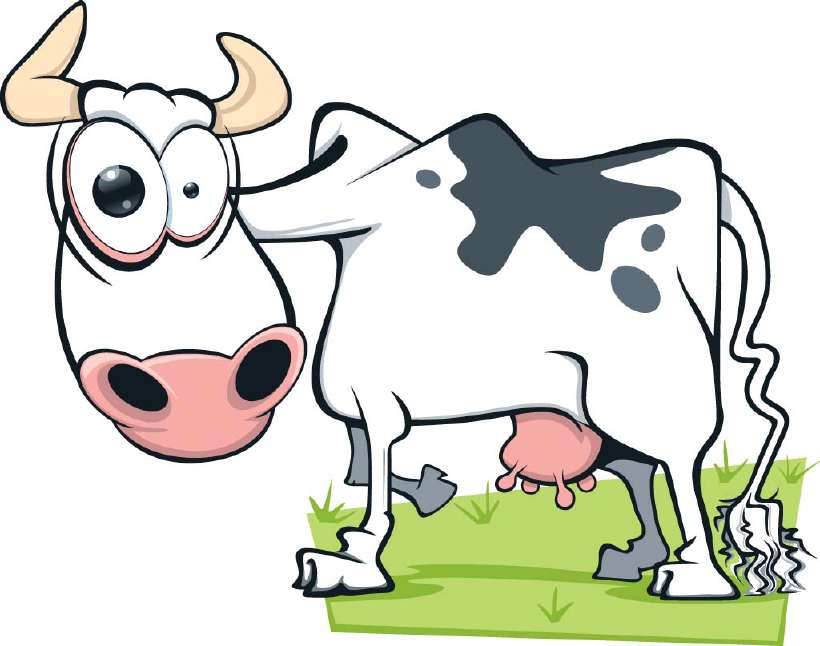What is Mad Cow Disease?
Home / Science for Kids / 5Ws & H For Kids / What is Mad Cow Disease?
In 1996, doctors detected 10 cases of a rare and fatal human brain disease in Britain and they diagnosed that it was probably due to eating beef from animals with “mad cow disease”. Scientifically, this cow disease was termed bovine spongiform encephalopathy or BSE while the disease affecting humans was termed Creutzfeldt-Jakob disease (CJD).
The disease caused panic in Europe both among people eating beef and the farmers who were selling it. The European Union, which is the administrative body and includes all countries in Europe, responded immediately by banning imports of British beef.

However, do cows go really mad with this disease? Scientists and doctors who have been studying BSE in cows decided that it is similar to a sheep disease called scrapie. Scrapie, which was discovered in the 1700s, is a fatal brain illness that can pass from one animal to another in a herd.
Scrapie attacks the brain and causes it to look like a sponge, as if full of holes. Hence the term “spongiform”. The disease causes extreme itching. Animals scratch themselves madly against fences, posts or other rough objects.
Their movements, too, become uncoordinated. Some become nervous and skittish while others become extremely aggressive. Inevitably, the animal dies. There is no treatment or cure nor even an explanation why or how this disease occurs.
Doctors discovered that the disease was being transmitted to cows through their feed. The cows were being fed a protein supplement from sheep called offal. In 1989, the link between sheep offal and BSE was firmly established and the British government banned the use of sheep offal to cattle.
However, many people were still not convinced that this was enough. They figured that if cows could became infected by eating sheep offal, couldn’t people suffer a similar fate after eating “mad cow” meat or milk?
In 1993, the BSE epidemic reached a peak with over 1,000 cases detected per week. However, the British government continued to argue that the mad cow disease could not harm humans.
By 1996, it was discovered that over 160,000 British cows have been diagnosed with BSE. Then 10 people died and it caused a furore all over the world.
There was general panic over this contaminated meat. Hotels and restaurants in Britain faced a slump as people refused to eat steaks or have milk or cheese products. People refused to buy beef and the meat rotted at the butchers. The European Union imposed a ban on British beef causing a war of words between Britain and the European Union.
Nobody wanted anything to do with British cows. Other countries imposed a ban too. The British government decided that the only way to prevent other uninfected cattle from catching the disease was to slaughter the diseased ones.
The Cambodian government even suggested that they be used to detonate over 10 million land mines left over from the Cambodian civil war.
Further scientific discoveries did nothing to ease the problem faced the British government. It was discovered that the CJE disease has a 30-year latency (time between infection and the appearance of disease).
This meant that the disease could be hidden and not be discovered for years! Secondly the disease-causing agent was very resistant.
Ultimately, the government decided to slaughter the cows. This required over 2.6 million heads of cattle to be killed in the United Kingdom. Special arrangements were made for farmers to get the cattle to the slaughterhouse. The government also had to compensate the farmers for loss of livelihood.
In 1998, the European Union was satisfied that the threat from the mad cow disease was eradicated and lifted the ban.
Today, mad cow disease is still present in British herds, but in very small numbers thanks to changes in feeding practices and strict medical watch over healthy and suspected cattle.
640 words |
6 minutes
Readability:
Grade 8 (13-14 year old children)
Based on Flesch–Kincaid readability scores
Filed under: 5ws and h
Tags: #farmers, #diseases, #british, #sheep, #cattle, #british government, #european
You may also be interested in these:
The Farmer and the Serpent
Smart Future
Three Nations or One?
The Hottest way to Catch Crooks
What are Go-Go Boots?